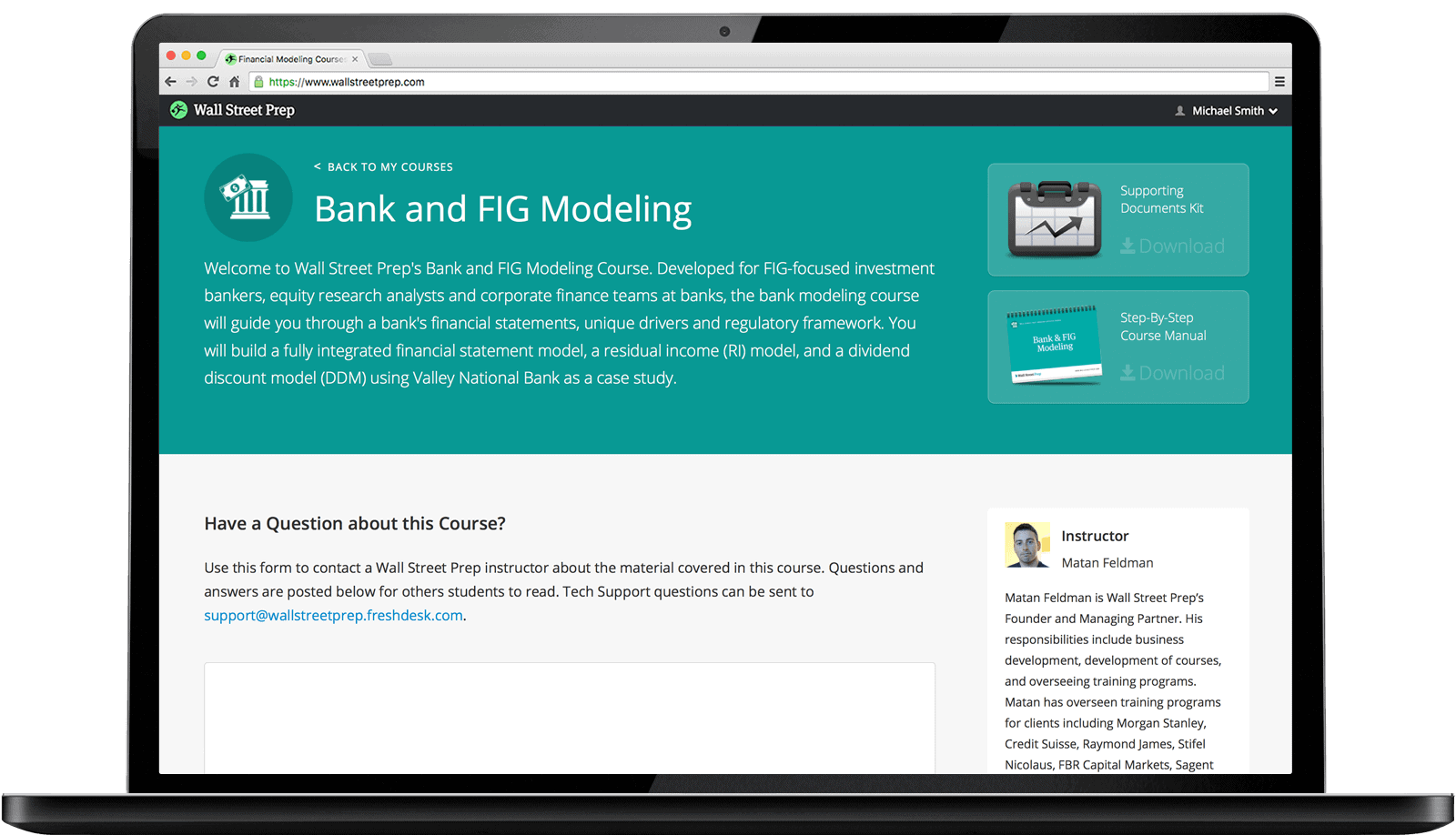Bank and Financial Institution Modeling Course (Bank – FIG Modeling) – Wall Street Prep
Description
Wall Street Prep – Bank and Financial Institution Modeling Course (Bank – FIG Modeling)
Download Now Wall Street Prep – Bank and Financial Institution Modeling Course (Bank – FIG Modeling). Download This Course For Cheap Price…
Developed for FIG-focused investment bankers, equity research analysts and corporate finance teams at banks, this course guides trainees through a bank’s financial statements, unique drivers, and regulatory framework. Please note, this bank & FIG modeling course is sold as a PDF E-Book and no video component.
The analysis of banks is different from that of most other types of industries. As a result, analysis requires adjustments and different approaches from traditional valuation methodologies. Wall Street Prep’s bank modeling & FIG modeling course will guide you step-by-step through a bank’s financial statements, unique drivers and regulatory framework. You will build a fully integrated financial statement model, a residual income (RI) model, and a dividend discount model (DDM) using Valley National Bank as a case study.
What You’ll Learn In Bank and Financial Institution Modeling Course
Section One: Building a bank forecast model
Build an advanced bank forecast model, projecting asset and liability balances, interest rates and spreads for key assets and liabilities, using industry best practices
Learn to effectively forecast the loan portfolio, investment securities, and deposits
Understand the modeling and forecasting of allowances for loan losses and net charge offs (NCOs)
Model regulatory constraints and analyze effects on leverage, capital ratios, and profitability
Forecast net interest income (NII), asset yields, funding costs and interest earning assets (IEA) and liabilities (IBL) using an approach that takes into account typical disclosure gaps, is internally consistent, and avoids common modeling pitfalls
Learn common forecast approaches for the non-interest income and expenses such as fees, and compensation
Identify the most appropriate “plugs” in a bank model to ensure the model balances, and address circular reference issues in the model
Section Two: Building a bank valuation model
Using the results derived from the forecast model, build a residual (excess returns) income model
Build an adjusted dividend discount model using the prevailing beset practices for banks (not the same as non-banks)
Analyze how regulatory capital constraints effect valuation
Develop assumptions about return on equity (ROE), risk weight assets (RWA), cost of equity, and minimal capital ratio that are internally consistent for a multiple stage model
Compare the other valuation approaches such as comps and DCF and identify strengths and limitations of each approach
GET THIS COURSE FOR JUST $100
Sales Page Link
Official Price: $997
Our Price: $100
Email us if you want to buy it or contact us on chat!




